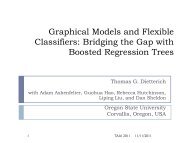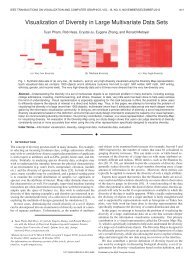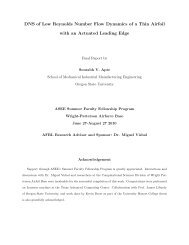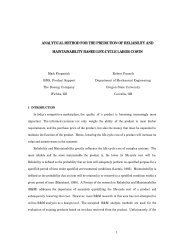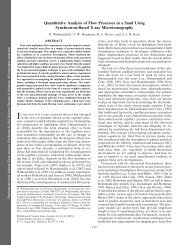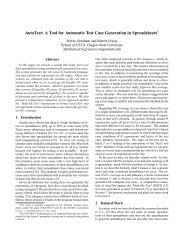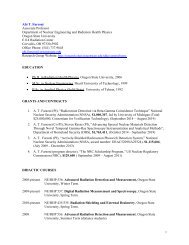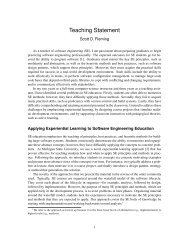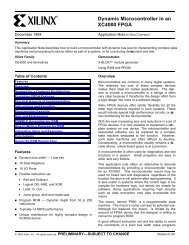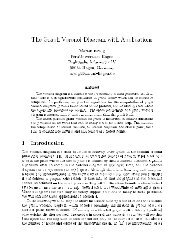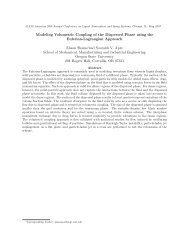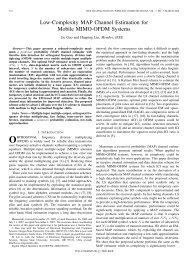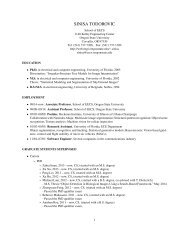Large-eddy Simulation of Realistic Gas Turbine Combustors
Large-eddy Simulation of Realistic Gas Turbine Combustors
Large-eddy Simulation of Realistic Gas Turbine Combustors
Create successful ePaper yourself
Turn your PDF publications into a flip-book with our unique Google optimized e-Paper software.
The basic idea is to isolate physical phenomena <strong>of</strong> droplet/particle motion, droplet breakup,<br />
evaporation, and turbulent combustion and simulate them in canonical problems where detailed<br />
description <strong>of</strong> the boundary conditions and in-depth experimental data are available. This also<br />
allows development and testing <strong>of</strong> new models and numerical schemes for flows <strong>of</strong> interest.<br />
The following cases with well specified boundary conditions have been simulated: 1) swirling,<br />
particle-laden flow in a co-annular jet (experiments by Sommerfeld & Qiu [21]), 2) evaporating<br />
droplets in a turbulent flow (experiments by Sommerfeld & Qiu [22]), 3) high-speed liquid jet<br />
atomization in a cylindrical chamber (experiments <strong>of</strong> Hiroyasu & Kudota [23]), and 4) turbulent<br />
reacting flow with gaseous fuel (experiments by Spadaccini et. al. [24]). After verifying<br />
the predictive capability <strong>of</strong> the numerical scheme and models used for these flows, the following<br />
simulations in realistic combustor geometries were performed: 5) non-reacting, gaseous flow in a<br />
PW test rig representative <strong>of</strong> realistic conditions, 6) non-reacting flows in a real PW combustor,<br />
7) liquid-spray patternation experiments <strong>of</strong> the PW injector, and 8) a multiphase, multiphysics<br />
simulation <strong>of</strong> reacting flow in real PW combustor.<br />
In this work, emphasis is placed on validation <strong>of</strong> spray dynamics and details <strong>of</strong> cases 1-3, and<br />
7-8 are presented next. The numerical results <strong>of</strong> case 4 and cases 5-6 have been well documented<br />
by Mahesh et al. [1, 11], respectively and are not repeated here.<br />
4.1 Validation <strong>of</strong> Eulerian-Lagrangian Formulation<br />
The Eulerian-Lagrangian formulation on unstructured grids is validated by simulating a swirling,<br />
particle-laden cold flow in a coaxial geometry corresponding to the experiments <strong>of</strong> Sommerfeld<br />
& Qiu [21]. This flow configuration was chosen because the basic flow features with swirling<br />
jets and recirculation bubbles resemble those inside a gas-turbine combustor. In addition, the<br />
boundary conditions are very well specified along with detailed statistics for the gas and particle<br />
phase at various locations making it an important validation case.<br />
Figure (1) shows a slice through the axisymmetric flow configuration which consists <strong>of</strong> a<br />
central core (primary) and annular (secondary) jets discharging into a cylindrical test section<br />
14



